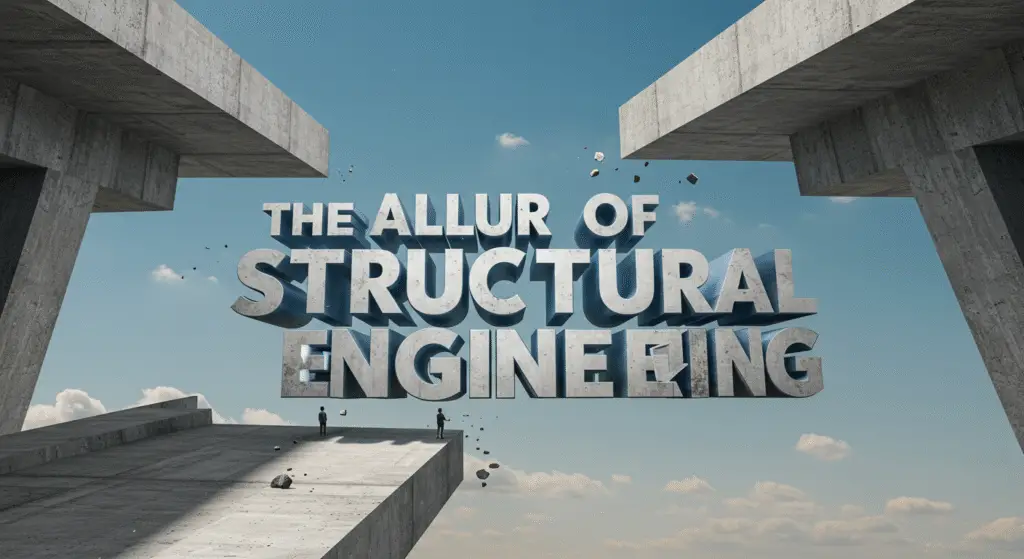What is the most difficult field in civil engineering?

civil
Civil engineering, often referred to as the “oldest and broadest” of the major engineering disciplines, is a profession that encompasses a wide range of specializations, each with its own unique set of challenges and complexities. From the design and construction of towering skyscrapers to the development of intricate transportation networks and the management of critical infrastructure, civil engineers play a vital role in shaping the built environment that supports modern societies.
However, within the diverse tapestry of civil engineering, certain disciplines stand out as particularly demanding, requiring an extraordinary level of technical expertise, analytical prowess, and problem-solving abilities. As aspiring civil engineers navigate the complex landscape of specializations, a common question that often arises is: which field within civil engineering is the most difficult?
In this comprehensive article, we will delve into the civil engineering discipline that is widely regarded as the most challenging, examining the core reasons for its perceived difficulty, the unique skills and knowledge required, and the strategies that aspiring professionals can employ to overcome these formidable obstacles and thrive in this demanding field.
Structural Engineering: Designing the Backbone of the Built Environment

At the heart of civil engineering lies the field of structural engineering, which focuses on the design, analysis, and construction of the physical structures that form the backbone of the built environment. Structural engineers are responsible for ensuring the safety, stability, and resilience of buildings, bridges, dams, and other critical infrastructure, drawing upon their expertise in areas such as materials science, structural analysis, and earthquake engineering.
The role of structural engineers has become increasingly crucial in the face of growing concerns about climate change, natural disasters, and the aging of existing infrastructure. These professionals are tasked with developing innovative solutions that can withstand the forces of nature, accommodate the evolving needs of society, and minimize the environmental impact of construction.
However, it is precisely the inherent complexity and high-stakes nature of structural engineering that make it one of the most challenging disciplines within the civil engineering profession.
- Mastery of Advanced Mathematics and Physics:
- Structural engineering is heavily reliant on a deep understanding of advanced mathematical concepts, such as calculus, linear algebra, and numerical analysis, as well as the fundamental principles of physics, including statics, dynamics, and material behavior. Aspiring structural engineers must be able to apply these complex theoretical frameworks to the analysis and design of structures, often in the face of multiple, competing constraints.
- Comprehensive Knowledge of Materials and Structural Systems:
- Structural engineers must possess a comprehensive understanding of a wide range of materials, including steel, concrete, wood, and composites, as well as the behavior and performance characteristics of these materials under various loading conditions. Additionally, they must be able to design and analyze complex structural systems, such as trusses, frames, and shells, to ensure the overall stability and integrity of the built environment.
- Stringent Safety and Regulatory Requirements:
- Structural engineering is subject to rigorous safety standards and building codes, which demand an unwavering commitment to public safety and the meticulous attention to detail required to ensure that designs comply with these critical regulations. Failure to meet these requirements can have catastrophic consequences, further heightening the stakes and the level of responsibility placed on structural engineers.
- Multidisciplinary Collaboration and Integration:
- Successful structural engineering projects often require the seamless integration of expertise from a wide range of disciplines, including geotechnical engineering, architectural design, and construction management. Structural engineers must possess the ability to effectively communicate and collaborate with professionals from these diverse fields, synthesizing their knowledge and expertise to develop comprehensive, holistic solutions.
- Continuous Learning and Adaptation:
- The field of structural engineering is constantly evolving, driven by advancements in materials science, computational modeling, and sustainable design practices. Structural engineers must be committed to continuous learning and professional development, continuously expanding their knowledge and adapting their skills to address the ever-changing challenges of the industry.
The Allure and Rewards of Structural Engineering

Despite the formidable challenges that structural engineering presents, the field is also widely recognized as one of the most prestigious and rewarding specializations within the civil engineering profession. The opportunity to play a pivotal role in the design and construction of iconic structures that shape the built environment and serve the needs of communities can be deeply fulfilling for those who are willing to embrace the intellectual rigor and technical demands of this discipline.
Moreover, the critical importance of structural engineering in ensuring public safety and the resilience of infrastructure in the face of natural disasters and other emergencies further elevates the significance and societal impact of this field. Structural engineers who can navigate the complexities of their work and deliver innovative, evidence-based solutions are highly valued and respected within the industry, commanding competitive salaries and ample opportunities for career advancement.
For aspiring civil engineers who are drawn to the technical challenges of design, the thrill of problem-solving, and the prospect of leaving a lasting mark on the world around them, structural engineering can be a deeply rewarding and fulfilling path to pursue.
Strategies for Succeeding in Structural Engineering
Navigating the demanding landscape of structural engineering requires a unique combination of technical expertise, problem-solving skills, and a steadfast commitment to continuous learning and professional development. Aspiring civil engineers who are drawn to this challenging field can leverage the following strategies to position themselves for success:
- Develop a Strong Foundation in Mathematics and Physics:
- A deep understanding of advanced mathematical concepts, such as calculus, linear algebra, and numerical analysis, as well as a solid grasp of the fundamental principles of physics, is essential for success in structural engineering. Aspiring professionals should prioritize the mastery of these foundational disciplines and be prepared to apply them rigorously in the design and analysis of structures.
- Cultivate Expertise in Structural Systems and Materials:
- Structural engineers must possess a comprehensive knowledge of the behavior and performance characteristics of a wide range of materials, as well as the design and analysis of complex structural systems. Aspiring professionals should seek out opportunities to gain hands-on experience, participate in research projects, and continuously expand their expertise in these critical areas.
- Stay Informed about Regulatory Requirements and Industry Standards:
- Structural engineers must be intimately familiar with the safety standards, building codes, and regulatory frameworks that govern their work. Aspiring professionals should make a concerted effort to stay up-to-date with the latest developments in these areas and develop the ability to translate these requirements into practical, compliant design solutions.
- Embrace Interdisciplinary Collaboration:
- Successful structural engineering projects often require the seamless integration of expertise from a variety of disciplines, including geotechnical engineering, architectural design, and construction management. Aspiring professionals should cultivate strong communication and collaboration skills, enabling them to work effectively with teams of diverse specialists to develop comprehensive, holistic solutions.
- Prioritize Continuous Learning and Adaptation:
- The field of structural engineering is constantly evolving, driven by advancements in materials science, computational modeling, and sustainable design practices. Aspiring professionals must be committed to continuous learning and professional development, continuously expanding their knowledge and adapting their skills to address the ever-changing challenges of the industry.
By embracing these strategies and demonstrating a steadfast commitment to the intellectual rigor and technical demands of structural engineering, aspiring civil engineers can position themselves for success in this challenging, yet deeply rewarding, field, making a lasting impact on the built environment and the communities they serve.
Conclusion
The civil engineering discipline of structural engineering, with its deep mathematical foundations, comprehensive materials knowledge, and stringent safety and regulatory requirements, is widely regarded as the most challenging specialization within the broader field of civil engineering.
The design, analysis, and construction of the physical structures that form the backbone of the built environment demand an extraordinary level of technical expertise, analytical prowess, and problem-solving abilities, as structural engineers must navigate a complex web of competing constraints, multidisciplinary collaboration, and the ever-evolving demands of the industry.
However, the allure and rewards of structural engineering are equally formidable, as these professionals play a pivotal role in shaping the iconic structures that define our urban landscapes, ensure the safety and resilience of critical infrastructure, and leave a lasting impact on the communities they serve.
For aspiring civil engineers who are drawn to the intellectual rigor and technical challenges of the field, structural engineering presents a compelling and deeply fulfilling career path, one that requires a steadfast commitment to continuous learning, interdisciplinary collaboration, and the pursuit of innovative, evidence-based solutions. By embracing the strategies outlined in this article and demonstrating an unwavering dedication to their craft, these aspiring professionals can position themselves for success in the most demanding, yet rewarding, discipline within the civil engineering profession.
Ultimately, the pursuit of structural engineering is not merely a pursuit of technical excellence – it is a calling to push the boundaries of human knowledge, to safeguard the well-being of communities, and to leave an indelible mark on the built environment that shapes the world around us. It is a challenge that the most dedicated and accomplished civil engineers are uniquely equipped to embrace.
- https://worldcivilsociety.com/which-engineering-has-the-least-math/
- https://worldcivilsociety.com/which-engineering-is-the-most-in-demand/
- https://worldcivilsociety.com/which-engineering-is-most-difficult/
- https://worldcivilsociety.com/what-are-engineering-fundamentals/

Pingback: Ranking the Most Difficulty of Engineering Majors – worldcivilsociety.com
Pingback: The Backbone of Engineering and How to Understand the Importance of Structures – worldcivilsociety.com
Pingback: Structural Glass Design: A Comprehensive Guide – worldcivilsociety.com
Pingback: What Does a Railway Engineer Do?